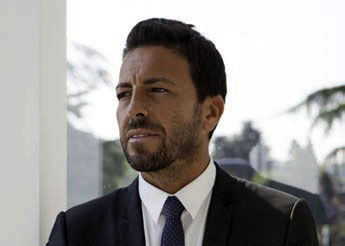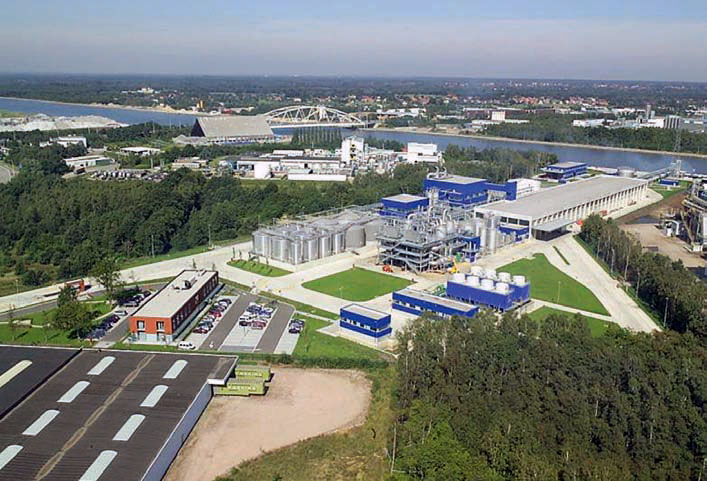Sadepan remains a Resin Pioneer
15 March 2017A company that makes both panels and resins has an advantage. Sadepan, part of the Saviola group, demonstrates how its expertise in each field has influenced and improved the other
Among resin manufactures, a leading light is Sadepan. It claims to be the company of reference for the chemical world and is the leading Italian manufacturer – and, it says, among the leaders in Europe – of urea, melamine and phenolic resins. The company has in recent years branched out to supply among other things agro-feeds and tannins from chestnut, but the heart of its chemical operations has been, and remains, for the panel industry.
Which is not too surprising. Sadepan began its operations as a maker of particleboard and the manufacture of wood based panels is still accounts for more than half its business. It also has a furniture division, making its own RTA-brand units as well as supplying IKEA and others. The story begins back in 1963 in a small shed in Viadana, Mantua in the heart of the Po valley. There Mauro Saviola, with his brother and a cousin, put together their first particleboard panel. The Saviola Group still belongs to the Saviola family and is managed by the oldest son, Alessandro Saviola, president of the Saviola Holding company.
The business expanded rapidly, indeed phenomenally by the standards of today. Within 10 years Sadepan, the makers of wood panels, had spawned Sadepan Chimica, the chemical company, to make resins, for its own use and to sell to others. Producing the resins meant that Sadepan Chimica entered immediately into synergy with other units of the Group, becoming a strong driver for their growth.
"The 70s and 80s were another age," says Dario Gozzi, executive director of the chemicals side of the company, when we asked him the secret of that rapid expansion.
"In the 60s and 70’s, you had more than 30 board producers in Italy. Today there are four remaining." Which is not to say that it was easy for the young company. "We must have done something right, to be among the four remaining and not the 26 that closed!"
Today the Saviola group embraces nine companies – two of them chemical, six wood, and one furniture making - with plants in Italy, Belgium and Argentina. Group revenues were €52m in 2015, with the majority of that coming from the wood based businesses. Sadepan claim 4% of the European panels market.
The core business of Sadepan Chimica is the production and sale of urea and melamine resins for the wood industry and beyond.
Twenty one percent of its production is consumed by the Saviola group’s wood-using companies, 79% goes to the outside market.
The range of products is constantly evolving, from formaldehyde to formurea and urea-formaldehyde resin to phenolic resins for impregnating surfacing papers.
The application of an established heritage of technical and scientific knowledge has introduced new solutions for reducing the potential environmental impact of its products, such as the progressive reduction of free formaldehyde in the resins.
For panel makers and resin makers alike, formaldehyde – or more accurately, reducing formaldehyde emissions – is today a prime concern. Sadepan can claim to have been not only in the forefront of formaldehyde reduction but ahead of the regulations – and indeed ahead of the game.
The sensitivity towards formaldehyde has increased over time. The United States, Japan and the European Union long ago defined regulations for the reduction of emissions of formaldehyde from panels.
In this, the Saviola Group was a precursor, always focusing on safety and quality of its product. The Ecological Panel, produced for the last 20 years, has always presented emission values that were lower than the permitted levels, even before Europe imposed the E 1 class. In 2003, the company gained its first F**** certification for low formaldehyde emission; in 2004 it produced LEB, or low emission board, claimed by the company as 'the lowest emission board worldwide'.
If this was far-sighted, says Dario, it stems from the vertical integration of the company and its beginnings as a panel maker. “The idea of the whole group has been focused on renewable and sustainable resources. In 1992, we began using recycled wood as a component in our panels, to the tune of about 20%. Five years later, by 1997, we had a panel wholly made of recycled wood. We had the technology of how to clean the wood of stones and glass and dirt and so on. So we were well ahead of the world trend in that area.”
The company now has a network of waste wood collection points throughout Europe, collecting 1.5 million tons each year for recycling into panels and saving in the process, it says, 10,000 trees a day. Being a pioneer in recycled wood forced Sadepan also to pioneer low-formaldehyde resins.
"Wood itself of course contains formaldehyde. Different types of wood contain different amounts. But we were making our panels of recycled wood, so it was of all kinds of different species, with all kinds of different histories, and from all kinds of different sources and countries: Italy, France, Switzerland and so on. So, unlike our competitors whose panels were from new timber, single-species and single-source, we had no direct control over how much formaldehyde was in our source material. But we needed to be in a position to guarantee to the market a low-formaldehyde content. That forced us to reduce the formaldehyde in our resins, to develop special resins and an efficient formaldehyde catcher, while our competitors faced no such pressure.
"So our recycled wood led to our lowemission binders. And since we are a vertically integrated company our chemical and wood divisions worked closely on these issues.
"The wood and the chemicals go together. When we go to market we always start with the wood, since wood makes up most of the product. Our analysis starts with that," says Mr Gozzi. "The secret is not just a resin with low emissions. It has to be a resin that allows reasonably high productivity all along the line. You have to find the right formaldehyde catcher without losing too much capacity in the plant. That is part of our know-how. By 1993 we were able to produce F**** panels from 100% recycled wood. By 2003 we already had 10 years' experience of monitoring the kind of wood in our source.
"The issue is not only to reach the lowest board emission level, but to reach it in a proper way – a cost-efficient way, with the costs being that of the whole production system, not just the cost of the resin. The glue can cost two or three euros more but if you can make your boards at a faster rate, with less energy and handling and labour, then that is not an issue. The issue is the total cost of everything. Fundamentally, you buy by the tonne; you sell by the cubic metre."
In countries where the climatic conditions are extreme (very hot or very cold), the use of a liquid product can be difficult. To meet the needs of these markets, Sadepan Chimica is one of the very few manufacturers of powdered resin. Paraformaldehyde is an extremely innovative product: it is a solid formaldehyde, concentrated to 93%, which takes the form of flakes and is stable, convenient and safe, lowering the risks of transport and handling of liquid formaldehyde.
Sadepan Chimica also provides a service of consultancy and technology transfer, providing customers with projects and turnkey plants for the production of formaldehyde and urea-formaldehyde resins.
In particular, Sadepan has always been the leading R&D 'brain' of the Saviola Group and the originating force over the years of several major upgrading projects.
As, for example, the latest incarnations of the 100% recycled wood ParticleBoard: The LEB® (Lowest Emission Board) Ecological Panel and the IDRO-LEB® Ecological Panel (Water Resistant Lowest Emission Board) made with special bonding UF, UmF & MUF glues.
"We did very well up until 2007, which was probably our best year," says Dario Gozzi. Then the crisis struck, as it did almost everywhere and the years were lean. The group was restructured and re-formed in 2011. "Since 2014 we have been back to a very healthy situation. 2015 was a good year, so was 2016." And for 2017? "We keep our fingers crossed."


